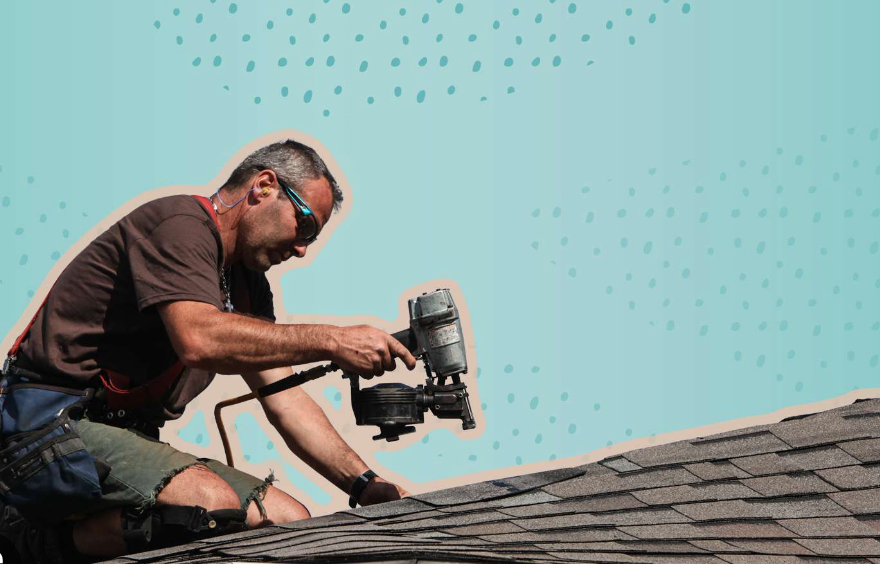A strong and reliable roof is essential for protecting your home from the elements and maintaining its structural integrity. Over time, roofs can deteriorate due to age, weather conditions, and other factors. To ensure the safety and longevity of your roof, regular inspections and timely replacements are crucial. In this article, we will delve into the significance of roof inspection and replacement, explore the different types of roofing materials, discuss the inspection process, and provide guidance on selecting a reputable roof replacement service.
Understanding Roof Inspection
Roof inspections play a pivotal role in identifying potential issues and addressing them before they escalate into costly problems. By conducting regular inspections, homeowners can detect signs of damage, leaks, or wear and tear, allowing for timely repairs or replacements. It is advisable to hire professional roof inspectors who possess the expertise and knowledge to thoroughly assess the condition of your roof.
During a roof inspection, inspectors examine various elements, including shingles, flashing, gutters, and ventilation systems. They also evaluate the roof’s interior, inspecting the attic, ceilings, insulation, and any signs of water damage or mold growth. By carefully scrutinizing these areas, inspectors can provide comprehensive reports detailing the current state of the roof and any necessary repairs or replacements.
Types of Roofing Materials
Roofing materials come in a variety of options, each with its own advantages and disadvantages. Common choices include asphalt shingles, metal, wood shakes, slate, and tile. When selecting a roofing material, it is important to consider factors such as durability, aesthetics, climate suitability, and budget. The choice of material greatly influences the roof’s lifespan and maintenance requirements.
For example, asphalt shingles are affordable and widely used, but they may have a shorter lifespan compared to more durable options like metal or slate. Wood shakes offer a rustic look but require regular maintenance to prevent rot and insect infestations. Tile and slate roofs are known for their longevity, but they can be heavier and more expensive. By understanding the characteristics of different roofing materials, homeowners can make informed decisions that align with their preferences and budget.
The Roof Inspection Process
Before conducting a roof inspection, it is essential to prepare adequately and prioritize safety. This includes gathering the necessary tools, ensuring stable footing, and wearing appropriate protective gear. Once the preparations are complete, the inspection can begin.
The exterior inspection entails examining the condition of the roof’s surface, including the shingles, flashings, chimneys, gutters, and downspouts. Inspectors look for signs of damage, such as missing or cracked shingles, loose flashings, or clogged gutters. They also assess the roof’s overall drainage system to ensure water flows freely and does not cause any structural damage.
Moving to the interior inspection, the attic is carefully examined for any indications of leaks, proper insulation, and ventilation. Inspectors check for signs of moisture, mold, or pest infestations. They also assess the condition of the insulation, ensuring it meets the recommended standards for energy efficiency.
Once the inspection is complete, the findings are documented in a comprehensive report. This report serves as a valuable resource for homeowners, outlining any issues identified, recommended repairs or replacements, and estimated costs. Armed with this information, homeowners can make informed decisions and take necessary action to maintain their roof’s integrity.
Roof Repair vs. Replacement
When faced with roof issues, homeowners often wonder whether they should opt for repairs or consider a complete replacement. Several factors influence this decision, including the extent of damage, the age of the roof, cost considerations, and the overall condition of the underlying structure.
In some cases, minor repairs can effectively address specific problems, such as fixing a small leak or replacing a few damaged shingles. However, if the roof is nearing the end of its lifespan, has extensive damage, or experiences recurrent issues, a replacement might be the more practical and cost-effective option.
While roof repairs offer a temporary solution, they may not address underlying problems that could resurface in the future. Investing in a roof replacement provides an opportunity to start fresh with a new, durable roof system that offers better protection and longevity. Although the upfront cost of replacement may be higher, it can save homeowners from frequent repairs and potential damage caused by a failing roof.
Selecting a Roof Replacement Service
Choosing the right roofing contractor for a roof replacement project is vital to ensure satisfactory results and a hassle-free experience. When selecting a roofing company, it is essential to conduct thorough research and consider various factors.
Start by seeking recommendations from friends, neighbors, or local building associations. Look for companies with a solid reputation, positive customer reviews, and a track record of successful projects. Verify that the contractors hold the necessary licenses and insurance coverage, as this guarantees their credibility and protects homeowners from liability in case of accidents or property damage.
Request quotes and compare proposals from multiple roofing companies. Consider the pricing, materials used, warranties offered, and the estimated project timeline. A reliable contractor will be transparent, providing detailed explanations and answering any questions or concerns. By carefully evaluating these factors, homeowners can make an informed decision and choose a trustworthy roofing service that meets their requirements.
Roof Replacement Process
Once the decision for a roof replacement has been made, it is essential to plan and execute the process effectively. A well-executed replacement ensures minimal disruption, timely completion, and optimal results.
The first step involves scheduling the replacement project with the chosen roofing company. Consider factors such as weather conditions and the availability of materials and contractors. Proper planning ensures that the replacement can be carried out efficiently without unnecessary delays.
Before the replacement begins, the site needs to be prepared. This includes removing any furniture, vehicles, or obstacles that might hinder the project. It is crucial to take necessary safety precautions to protect both the workers and the property during the replacement process.
Next, the old roof is carefully removed, revealing the underlying structure. This step allows for a thorough inspection of the decking and structural elements. Any necessary repairs or reinforcements are made to ensure a stable and solid foundation for the new roof.
With the underlying structure in good condition, the installation of the new roof system commences. This includes laying down the chosen roofing material, ensuring proper insulation, and installing necessary flashings, vents, and other components. The process concludes with meticulous finishing touches, such as cleaning up the site, removing debris, and conducting a final inspection to ensure everything meets the required standards.
Maintaining and Extending Roof Lifespan
After investing in a roof replacement, it is crucial to adopt proper maintenance practices to extend the new roof’s lifespan and ensure its optimal performance.
Regular roof maintenance involves inspecting the roof at least once or twice a year, especially after severe weather events. Keep an eye out for loose or damaged shingles, signs of leaks, clogged gutters, or any other issues that require attention. Promptly addressing minor repairs can prevent them from escalating into more significant problems.
In addition to inspections, homeowners should prioritize proper ventilation and insulation. Adequate ventilation helps prevent moisture buildup, which can lead to mold growth and deteriorate the roof’s structure. Proper insulation contributes to energy efficiency and minimizes heat transfer, reducing the strain on the roof and improving its overall performance.
Maintaining clear gutters and downspouts is essential to ensure proper water drainage. Clogged gutters can lead to water backup, causing damage to the roof and potentially the interior of the home. Regularly cleaning gutters and removing debris prevents such issues.
Conclusion
Taking care of your roof through regular inspections, timely repairs, and, when necessary, roof replacement is essential for maintaining the structural integrity of your home. By understanding the importance of roof inspections, selecting suitable roofing materials, conducting thorough inspections, and making informed decisions regarding repairs or replacements, homeowners can ensure the long-lasting protection of their property.
Investing in a professional roof inspection service from a reputable contractor guarantees high-quality workmanship and the installation of a reliable roof system. Remember to prioritize regular roof maintenance, proper ventilation, insulation, and maintaining clear gutters to extend the lifespan of your roof and avoid costly repairs in the future.




